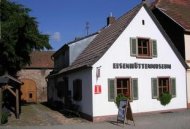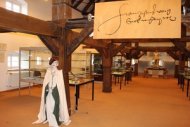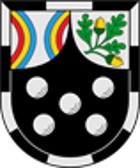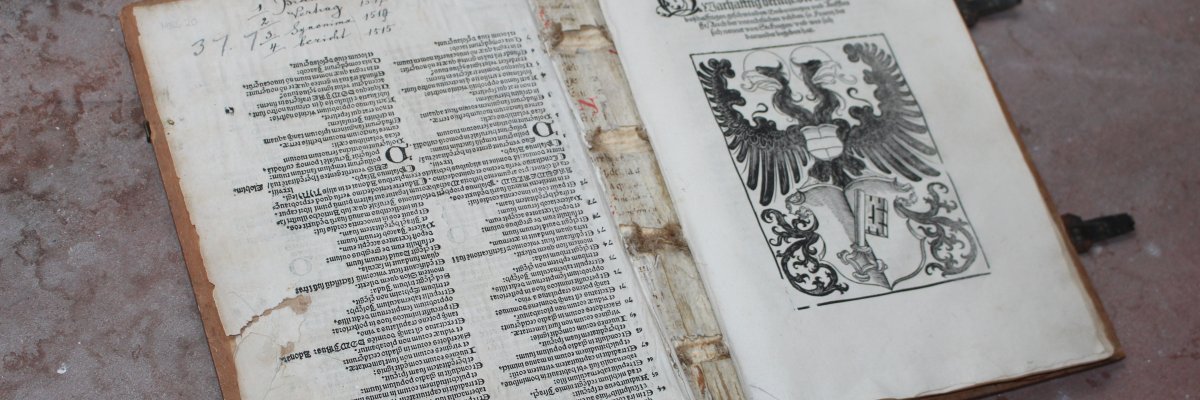Ironworks Museum

The forest, the water and the iron industry are closely connected with Trippstadt.
A museum has been set up in the listed building complex "Schmiede Huber", in which iron production and processing in the Trippstadt / Karlstal area is documented.
In addition, demonstrations and courses are offered in the historic forge.
An ironworks and charcoal-burning path, which is designed as a nature trail, provides the connection to the production facilities in the "Karlstal".
Information:
Tourist-Info Trippstadt, Hauptstr. 26, 67705 Trippstadt, Tel.: 06306/341, Fax: 06306/1529
Opening times:
Open during the business hours of the tourist information office or on request.
Museum Sickinger Höhe

The museum was opened in 1976 for the 1000th anniversary of Queidersbach. It is located in an old schoolhouse built in 1836 that also serves as the town hall. In the 19th century, when the village did not yet have its own church, the small bell in the tower had numerous services, including everyday tasks.
The museum itself has an area of around 500 m² and today has a collection of allmost 4.000 objects. It is a holistic museum, which means that the visitor can get an overview of the early history to the recent past.
The focus of our presentation is the front yard of the Hornbach monastery; the resettlement of the Sickinger Land at the end of the 17th century; the school history and the former open-air theater. Above all, we would like to highlight the reform of agriculture on the Sickinger Höhe since the 18th century. It was the basis for the relative prosperity of the former farmer. In the area of home decor, our interest for collectors is therefore on the period of the 18th and 19th centuries, whereby we can present a seperate room with furnishings from this area. These include objects of folkloric importance such as the alcove with stove stone and front door divided across, an ensemble that was created around 1780.
The museum can show a portrait of Baron Karl Anton from the time of the Sickinger rule. The oil painting in the original frame was created around 1730. The man who was raised to the rank of imperial count in 1773 became in his years a tragic figure in the family drama Sickingen, a material from which Schiller also obtained his >>robber<<. Also important for the understanding of the resettlement: the sicking "police order" from 1732, written by the able official Frebus. A pilaster capital with a Rococo coat of arms from around 1760 comes from a sicking office building and is brand new in our collection.
The coin and medal collection fits into the scheme outlined above: Outstanding is Franz von Sickingen´s silver medal from 1521; a spectrum of characteristics of the Palatinate and Palatinate-Zweibrücken; the large coin treasure discovered in 1923 from the monastery courtyard is documented in a series of coins.
Just as the collection of museum-worthy objects is still our endeavor, our main focus is on the conservation and care of our holdings. Our gaze is also directed towards the village and field monuments.
Today the Museum Sickinger Höhe sees itself less as a pure village museum, but it based on the history of a region known as Sickingerhöhe. The centuries-old community of fate with our neighboring communities Bann and Linden, but also Krickenbach, the villages of the actual "Höhe", and Landstuhl as the main town, is a special obligation for us.
Adress:
Museum Sickingerhöhe, Schulstraße 4, 66851 Queidersbach or
Alois Schneider, Kreuzstr. 34a, 66851 Queidersbach
Opening times:
The exhibition is open every first Sunday of the month from 2 p.m. to 5 p.m..
The museum director Alois Schneider is also available during the week – also for school classes – by telephone arrangement (phone: 06371 / 14 77 5)
Sickingen museum tithe barn

The museum of the Sickingen city set up in the tithe barn in Landstuhl is based on the "Sickingen exhibition", which was designed together with Theo Schohl based on an exposé by Karlheinz Schauder. It is about the person of Franz von Sickingen, his political and intellectual development, his historical background and his effect on posterity. As props and relics from that period are only available to a limited extent, the exhibition is based primarily on written evidence, on the Sickingen library of the Heimatfreunde Landstuhl, on loans from the Fallot-Burghardt family and the city archive. The documents are supplemented and illustrated by pictures and objects. The aim was a diverse and colorful panorama, which should give the visitor the opportunity to.
The available material was arranged according to different topics and presented accordingly in several subject areas. The section "The Knight and His Time" offers writings and pictures from Franz von Sickingen´s environment. On display are, among other things, the original of a letter from Sickingen to the Knights´Assembly in Schweinfurt from January 1523, pamphlets from the Reformation period, including a letter from Sickingen to his brother-in-law in Henschußheim, a writing by Martin Luther dedicated to Sickingen and, finally, Dialogues by Ulrich von Hutten, which were built on the Ebernburg in 1521.
Another group would like to introduce the historical background and contemporaries of Sickingen. Corresponding texts and portraits are presented on two walls of the room and on four boards. The texts are taken from Werner Stein´s "Great Cultural Roadmap", which contains the most important dates in world history in a thematic overview. From Sickingen´s year of birth to the year of his death, a timeline of his life is created. The portraits of contemporaries are united on the panels of the partition walls.
The next sub-area is devoted to the topic of "Sickingen in historiography". Two showcases show examples of the echo that Sickingen has found among historians over the centuries. The number of historians represented ranges from Thomas Hubert and Caspar Sturm to Würdtwein and Beddeus to Ernst Münch and Ulmann.
Two further showcases show the "Effects of Sickingen in the Present". They are expressed in numerous individual studies, in technical work by schoolchildren and students, and in press articles the knight.
This part of the exhibition also documents the efforts of the Heimatfreunde in Landstuhl and Flehingen as well as municipal institutions to maintain and preserve the legacy of Sickingen. Some items have a more curious and anecdotal character, but are still interesting and worth seeing. The image and written documents are attractively complemented by maps and photos on the walls.
Adress:
Zehntenscheune, 66849 Landstuhl
Opening times:
On special occasions (times are published in the press and on the Internet).
For interessted parties and schools, register with the Landstuhl Association of Municipalities,
Tel. 06371 / 83-0 or by mail.


